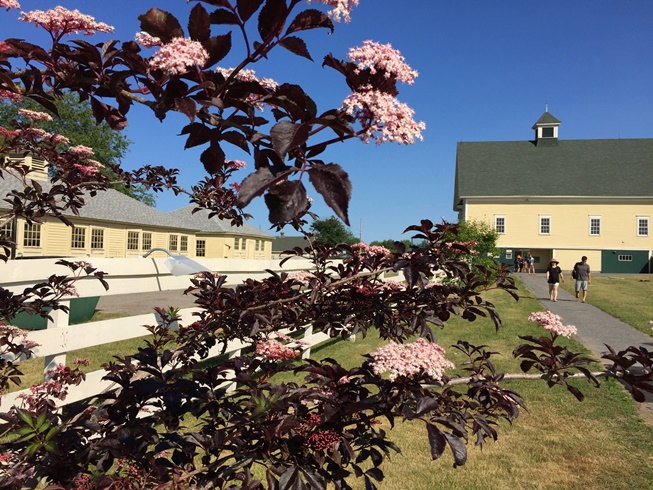The Wrack
The Wrack is the Wells Reserve blog, our collective logbook on the web.
The Wrack is the Wells Reserve blog, our collective logbook on the web.

Elderberry is a pioneer species that is found in disturbed and open areas. As with all pioneer species, if habitat is left untouched, the shrub will eventually succumb to forest as tree seedlings grow. Elderberry is blooming now along roadsides and meadow edges and is easily identified by its opposite branching, deeply cut green leaves, and creamy, flat-topped blossoms.
Berries produced later in the season are an important food source for birds and other animals (including us), all of which like them best when they are fermented. Elderberry has long been heralded for its medicinal and healing properties with accounts dating back to Hippocrates in 400 BCE who referred to the elderberry shrub as his “medicine chest.” Although elderberry prefers wetland habitat, it will grow easily in dryer areas.
As you walk toward the barn, you will be stopped in your tracks by our red-leaved elderberry in full, spectacular bloom. This cultivated variety, which I believe is Sambucus nigra subspecies canadensis 'Black Lace,' is available as a lovely specimen plant for your garden.
When one plants a cultivated variety as a native plant, the question comes back to “is it native enough?” Does it offer the same benefit to wildlife as the true native, which benefits from biodiversity within the species? Are insects snacking on the leaves? Are animals eating the berries and are the berries as nutritious as those found in the wild? I don’t know if we will ever know for sure, and we can’t worry too much about it. For now, we will consider it native (sort of), and that’s that!